Want to know more about the Best Schools For Programming In the US and make an informed decision? Here is a good place to start.
The search for the perfect programming school can be a daunting task, with countless factors to consider and a myriad of options available. However, finding the right institution is paramount for your future success in the tech industry.
In this blog post, we will explore the top schools for computer programming, shedding light on their unique offerings and guiding you towards making an informed decision to elevate your career prospects.
Please note that schools are selected based on our criteria (at the end of the article), ranked by the latest acceptance rate.
Table of Contents
#25. University of Illinois at Urbana-Champaign
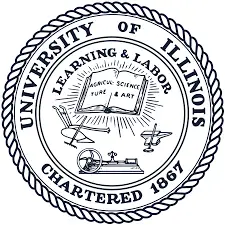

- Acceptance rate: 60%
- Average entry score: 1210-1470 SAT or 27-33 ACT
- Student-to-faculty ratio: 21 to 1
- Estimated cost of attendance (tuition and fees): $33,060-$50,510
- Average earning potential for graduates: $92,200 (College Simply)
The University of Urbana-Champaign offers several computer programming programs, including a Bachelor’s degree in Computer Science and a Master’s degree in Computer Science.
Graduates of these computer programming degree programs have gone on to work for top tech companies such as Google, Microsoft, and Amazon. The curriculum emphasizes problem-solving skills, programming languages, software development, and computer systems.
Students also have the opportunity to participate in research projects and internships to gain real-world experience. The programs aim to prepare students for successful careers in the rapidly evolving technology industry.
Source: UIUC
#24. University of Wisconsin Madison
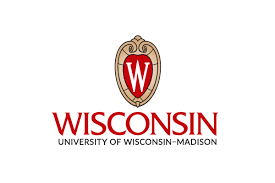

- Acceptance rate: 53%
- Average entry score: 1300-1480 SAT or 28-32 ACT
- Student-to-faculty ratio: 18 to 1
- Estimated cost of attendance (tuition and fees): $27,484-$55,372
- Average earning potential for graduates: $76,900 (College Simply)
UW-Madison offers exceptional programming courses, distinguishing itself with a cutting-edge curriculum, renowned faculty, and a collaborative learning environment.
Students gain expertise in various languages like Python, Java, and C++ while exploring AI, data science, and cybersecurity. The hands-on approach, industry connections, and real-world projects ensure practical skills and career readiness.
UW-Madison’s commitment to innovation and excellence positions graduates for success in the rapidly evolving tech landscape.
Source: University of Wisconsin Madison
What’s it like to study at the University of Wisconsin Madison?
#23. University of Washington
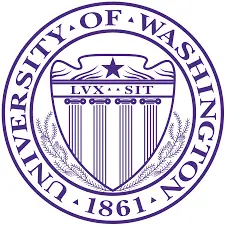

- Acceptance rate: 53%
- Average entry score: 1220-1470 SAT or 29-34 ACT
- Student-to-faculty ratio: 9 to 1
- Estimated cost of attendance (tuition and fees): $30,640-$58,470
- Average earning potential for graduates: $101,710 (College Factual)
The computer programming courses at the University of Washington focus on producing skilled software developers who can create high-quality, efficient, and user-friendly software applications.
Their curriculum emphasizes modern programming languages, techniques, and tools, and students are encouraged to work on real-world projects throughout their studies.
By the end of the computer programming degree program, graduates are well-equipped with the skills, knowledge, and experience they need to build complex software systems that meet the needs of businesses and organizations across a wide range of industries.
Source: Class Central
#22. University of Maryland College Park
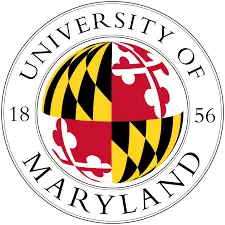

- Acceptance rate: 44%
- Average entry score: 1370-1510 SAT or 31-34 ACT
- Student-to-faculty ratio: 18 to 1
- Estimated cost of attendance (tuition and fees): $27,984-$55,666
- Average earning potential for graduates: $81,300 (College Simply)
The University of Maryland College Park offers an extensive range of programming courses catering to diverse interests and skill levels.
Students can explore foundational courses like Introduction to Programming and Data Structures or dive into specialized topics such as Artificial Intelligence, Cybersecurity, and Web Development.
With cutting-edge facilities and renowned faculty, UMD fosters a collaborative learning environment that empowers students to excel in their chosen programming fields.
Source: Class Central
Similar articles like this:
#21. University of California San Diego
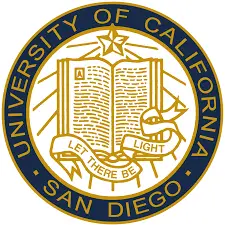

- Acceptance rate: 37%
- Average entry score: 1270-1480 SAT or 28-34 ACT
- Student-to-faculty ratio: 12 to 1
- Estimated cost of attendance (tuition and fees): $36,061-$65,835
- Average earning potential for graduates: $141,200 (College Simply)
The programming programs at the University of California San Diego offer a comprehensive education in computer science and software engineering. Graduates of these programs are well-equipped with the technical skills and problem-solving abilities necessary for success in the field.
Additionally, the university’s emphasis on interdisciplinary education and real-world applications ensures that graduates have a well-rounded understanding of the industry and are able to adapt to new challenges as they arise.
As a result, graduates of UC San Diego’s programming programs are highly sought-after by employers and have a track record of success in their careers.
Source: UCSD Extension
#20. University of Texas at Austin
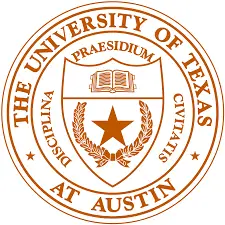

- Acceptance rate: 32%
- Average entry score: 1230-1500 SAT or 29-34 ACT
- Student-to-faculty ratio: 16 to 1
- Estimated cost of attendance (tuition and fees): $28,928-$57,512
- Average earning potential for graduates: $76,200 (College Simply)
At the University of Texas at Austin, aspiring computer scientists can immerse themselves in an exceptional programming curriculum that covers a wide spectrum of topics, from the fundamentals to the latest advancements in the field.
Esteemed faculty members and state-of-the-art research facilities elevate the learning experience, while valuable resources such as internships, career services, and industry connections prepare students for future success.
UT Austin’s Computer Science program is a top choice for those seeking a world-class education in this dynamic field.
Source: The University of Texas at Austin
#19. University of California, Irvine


- Acceptance rate: 29%
- Average entry score: 1230-1430 SAT or 26-33 ACT
- Student-to-faculty ratio: 18 to 1
- Estimated cost of attendance (tuition and fees): $34,161-$63,915
- Average earning potential for graduates: $71,600 (College Simply)
UCI offers a range of computer programming courses that prepare students for careers in tech. From introductory courses in Python to advanced courses in data science and machine learning, UCI’s programming curriculum covers a wide range of topics.
Graduates of UCI’s computer programming courses have gone on to work for top tech companies like Google, Microsoft, and Amazon, as well as startups and government organizations.
The skills and knowledge gained through UCI’s programming courses prepare students for diverse careers in the tech industry.
Source: UCI
#18. Purdue University West Lafayette
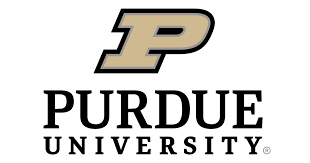

- Acceptance rate: 25%
- Average entry score: 1267 SAT
- Student-to-faculty ratio: 14 to 1
- Estimated cost of attendance (tuition and fees): $24,390-$50,000
- Average earning potential for graduates: $84,800 (College Simply)
Purdue University’s programming courses offer top-tier education, fostering innovative thinking and practical skills. Students gain expertise in languages like Python, Java, and C++, delving into cutting-edge topics like AI and cybersecurity.
With renowned faculty, hands-on projects, and collaborative learning, graduates emerge as industry-ready professionals, adept at solving complex problems and equipped to excel in the ever-evolving tech landscape. Purdue’s commitment to nurturing talent ensures its graduates are in high demand.
Source: Purdue University
Similar articles like this:
- Best Schools For Geography Degrees
- 25 Best Business Administration Schools In The US
- Best Schools For Forensic Science
#17. University of Michigan Ann Arbor


- Acceptance rate: 20%
- Average entry score: 1360-1530 SAT or 31-34 ACT
- Student-to-faculty ratio: 15 to 1
- Estimated cost of attendance (tuition and fees): $32,272-$69,326
- Average earning potential for graduates: $101,900 (Grad Reports)
At the University of Michigan Ann Arbor, premier programming courses emphasize hands-on learning, real-world applications and foster collaboration.
A diverse curriculum spanning computing fundamentals to advanced topics ensures students excel in the tech industry. Graduates enjoy high placement rates and thrive in prestigious companies like Google, Microsoft, and Apple.
Their success reflects U-M’s commitment to equipping students with cutting-edge skills and innovative thinking for a rewarding career in technology.
Source: UMSI
#16. University of Southern California
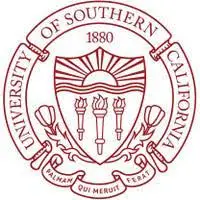

- Acceptance rate: 16%
- Average entry score: 1340-1530 SAT or 30-34 ACT
- Student-to-faculty ratio: 9 to 1
- Estimated cost of attendance (tuition and fees): $81,659
- Average earning potential for graduates: $110,796 (College Factual)
The computer programming courses at USC foster a close-knit community among students and faculty.
With small class sizes, students have ample opportunities for individualized attention and collaboration with peers. The program encourages teamwork through group projects and hackathons, creating a supportive environment that facilitates learning and personal growth.
Faculty members are highly accessible, providing students with guidance and mentorship. This community-based approach creates a dynamic learning experience that prepares students for successful careers in the field of computer programming.
Source: USC Catalog
What’s it like to study at the University of Southern California?
#15. Georgia Institute of Technology
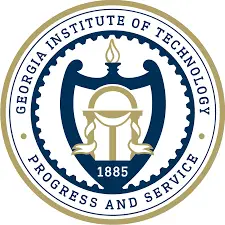

- Acceptance rate: 16%
- Average entry score: 1390 SAT
- Student-to-faculty ratio: 21 to 1
- Estimated cost of attendance (tuition and fees): $31,898-$53,010
- Average earning potential for graduates: $109,900 (College Simply)
Georgia Tech’s programming programs, including computer science and engineering, provide students with a world-class education and hands-on experience. Graduates excel in diverse fields such as software development, data science, and cybersecurity.
With strong industry connections and cutting-edge research opportunities, Georgia Tech alumni thrive in top tech companies and startups, shaping the future of technology and driving innovation across the globe. Their education equips them to navigate the ever-evolving digital landscape confidently.
Source: Georgia Tech
#14. University of California Berkeley
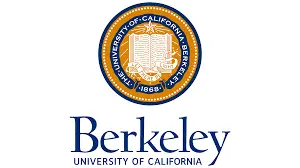

- Acceptance rate: 14%
- Average entry score: 1415 SAT
- Student-to-faculty ratio: 17 to 1
- Estimated cost of attendance (tuition and fees): $41,878-$71,632
- Average earning potential for graduates: $125,250 (College Factual)
Computer programming courses at the University of California Berkeley emphasize practical skill development for real-world applications.
The courses cover a range of programming languages and tools, from introductory courses in Python to advanced topics like machine learning and data science.
Students learn how to write clean, efficient, and maintainable code, as well as how to work collaboratively on software projects. The end result is a highly skilled and versatile graduate who is well-prepared for a career in technology.
Source: Berkeley Academic Guide
What’s it like to study at the University of California Berkeley?
Similar articles like this:
- 25 Best Schools For Insurance Degrees In The US
- Best Schools For International Relations
- 25 Best Digital Marketing Schools In The US
#13. Carnegie Mellon University
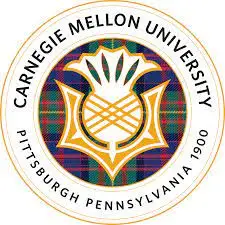

- Acceptance rate: 14%
- Average entry score: 1480-1560 SAT or 33-35 ACT
- Student-to-faculty ratio: 6 to 1
- Estimated cost of attendance (tuition and fees): $77,474
- Average earning potential for graduates: $161,723 (College Factual)
Carnegie Mellon University’s prestigious computer programming programs emphasize innovation, collaboration, and practical application. Students delve into cutting-edge technologies, benefiting from a robust curriculum and world-class faculty.
Graduates emerge as skilled problem solvers and industry leaders thanks to extensive hands-on experience, strong connections with top companies, and a thriving alumni network.
CMU’s commitment to excellence propels graduates into successful careers, shaping the future of the tech industry.
Source: CMU School of Computer Science
#12. University of California Los Angeles
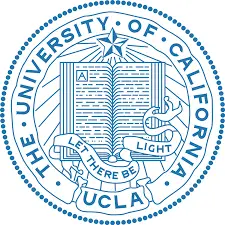

- Acceptance rate: 11%
- Average entry score: 1290-1520 SAT
- Student-to-faculty ratio: 18 to 1
- Estimated cost of attendance (tuition and fees): $16,847-$31,949
- Average earning potential for graduates: $122,100 (College Simply)
UCLA’s computer programming courses are among the best due to their robust academic offerings, distinguished faculty, and access to advanced resources. By attending these courses, students receive a well-rounded education that covers programming languages, software engineering, and algorithms.
The courses also offer research opportunities, industry connections, and a focus on practical applications, making them ideal for those looking to innovate and make a tangible impact in the tech world.
Graduates from UCLA’s programming courses are equipped with the skills necessary for a thriving career in the dynamic and ever-evolving tech industry.
Source: UCLA Extension
#11. Northeastern University
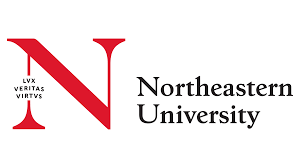

- Acceptance rate: 11%
- Average entry score: 1430-1550 SAT or 33-35 ACT
- Student-to-faculty ratio: 15 to 1
- Estimated cost of attendance (tuition and fees): $78,202
- Average earning potential for graduates: $88,000 (College Simply)
Northeastern University’s computer programming courses combine rigorous academics with real-world experiences, ensuring students thrive.
With cutting-edge curriculum, experienced faculty, and co-op opportunities, students gain hands-on skills and build strong foundations in programming languages, software engineering, and data management.
This comprehensive approach equips graduates with the confidence and expertise to excel in the competitive tech industry, driving their long-term success in diverse computing careers.
Source: Northeastern University
What’s it like to study at Northeastern University?
#10. Cornell University
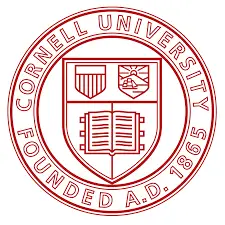

- Acceptance rate: 11%
- Average entry score: 1450-1560 SAT or 33-35 ACT
- Student-to-faculty ratio: 9 to 1
- Estimated cost of attendance (tuition and fees): $78,992
- Average earning potential for graduates: $147,241(College Factual)
At Cornell University, computer programming students thrive in a stimulating, collaborative environment. Programs such as computer science, electrical engineering, and information science blend rigorous coursework with hands-on experience.
Students benefit from state-of-the-art facilities, research opportunities, and connections to industry leaders. The diverse, supportive community ensures a well-rounded education and prepares graduates for successful careers in the technology sector.
Source: Cornell University
Similar articles like this:
#9. Rice University
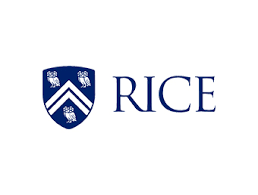
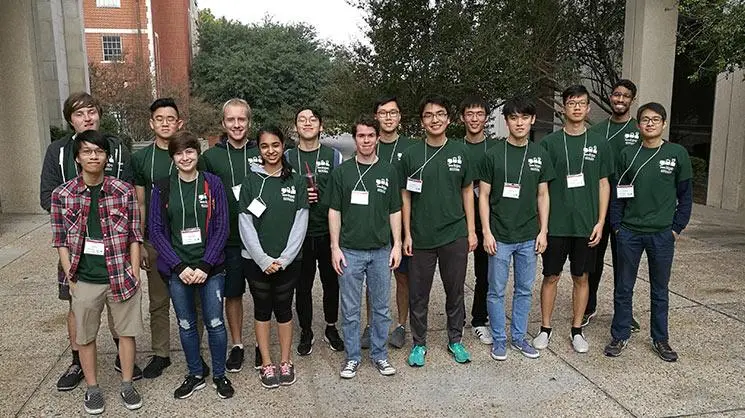
- Acceptance rate: 10%
- Average entry score: 1490-1570 SAT or 34-35 ACT
- Student-to-faculty ratio: 6 to 1
- Estimated cost of attendance (tuition and fees): $74,110
- Average earning potential for graduates: $122,770 (College Factual)
At Rice University, programming courses are expertly taught by world-class faculty renowned for their cutting-edge research and dedication to student success.
The learning environment fosters collaboration, innovation, and hands-on experience, empowering students to tackle real-world challenges.
With small class sizes, personalized attention, and a plethora of resources, Rice’s programming courses cultivate well-rounded professionals poised to excel in the ever-evolving world of technology.
Source: Rice University
#8. University of Chicago
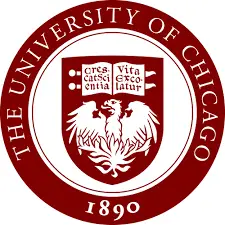

- Acceptance rate: 7%
- Average entry score: 1510-1580 SAT or 33-35 ACT
- Student-to-faculty ratio: 5 to 1
- Estimated cost of attendance (tuition and fees): $85,536
- Average earning potential for graduates: $87,000 (College Simply)
Discover the unparalleled programming courses at the University of Chicago, where an exceptional learning experience awaits. With a focus on combining theory and practice, students are provided with a broad curriculum that covers a range of programming languages.
Renowned faculty members bring their expertise to the classroom, while industry partnerships and research opportunities offer students a chance to develop their skills and knowledge.
The state-of-the-art facilities and collaborative atmosphere make the University of Chicago a leading institution in computer programming education.
Source: University of Chicago
#7. University of Pennsylvania
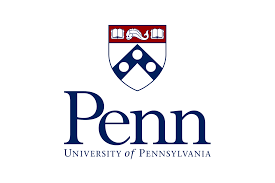

- Acceptance rate: 6%
- Average entry score: 1460-1570 SAT or 33-35 ACT
- Student-to-faculty ratio: 7 to 1
- Estimated cost of attendance (tuition and fees): $65,790
- Average earning potential for graduates: $127,623 (College Factual)
The University of Pennsylvania’s computer programming courses are a great option for those looking to become proficient coders. Led by experienced professors, the courses cover various topics, including artificial intelligence, machine learning, and computer vision.
Additionally, the professors have real-world industry experience at top tech companies such as Google, Microsoft, and IBM. The program also invites guest speakers from the tech industry to provide students with invaluable insights and networking opportunities.
Source: University of Pennsylvania
What’s it like to study at the University of Pennsylvania?
#6. Yale University
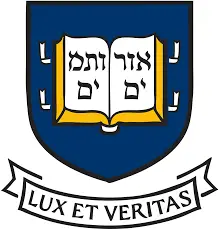

- Acceptance rate: 5%
- Average entry score: 33-35 ACT
- Student-to-faculty ratio: 6 to 1
- Estimated cost of attendance (tuition and fees): $84,525
- Average earning potential for graduates: $120,300 (College Simply)
Yale Programming courses set the stage for unparalleled success, molding future industry leaders through a comprehensive curriculum.
Through hands-on experiences and innovative problem-solving exercises, graduates of Yale’s programming courses emerge with a unique perspective and highly sought-after skill set.
With a focus on cutting-edge programming languages and techniques, the courses provide students with the tools they need to succeed in the constantly evolving tech landscape. Yale’s programming courses have a track record of producing trailblazers in various tech industry sectors.
Source: Yale Computer Science
Similar articles like this:
- 25 Best Schools For Economics In The US
- 25 Best Schools For Biology In The US
- 25 Best Schools For English Language and Literature in the US
#5. Massachusetts Institute of Technology
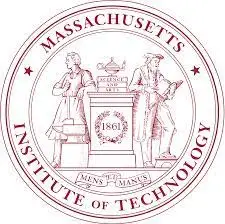

- Acceptance rate: 4%
- Average entry score: 1570 SAT or 36 ACT
- Student-to-faculty ratio: 3 to 1
- Estimated cost of attendance (tuition and fees): $77,570
- Average earning potential for graduates: $118,100 (College Simply)
MIT’s computer programming programs boast cutting-edge curricula, blending theoretical foundations with hands-on experience. Harnessing the power of online learning, MIT offers a multitude of resources. This way, they provide students worldwide with flexible, accessible education.
These platforms feature interactive courses, video lectures, and problem sets, allowing learners to develop programming skills at their own pace while connecting with a global network of peers and educators.
Source: MIT
#4. Stanford University


- Acceptance rate: 4%
- Average entry score: 1470-1570 SAT or 34-35 ACT
- Student-to-faculty ratio: 5 to 1
- Estimated cost of attendance (tuition and fees): $78,898
- Average earning potential for graduates: $126,400 (College Factual)
Stanford University’s computer programming programs, renowned for their cutting-edge curriculum and world-class faculty, transform students into skilled software engineers and innovative tech leaders.
Students immerse themselves in a collaborative learning environment, engaging in hands-on projects and mastering languages like Python, Java, and C++.
Alumni frequently fuel Silicon Valley’s growth, shaping the future of technology by launching startups, partnering with major companies, and cultivating groundbreaking solutions.
Source: Stanford University
#3. Princeton University
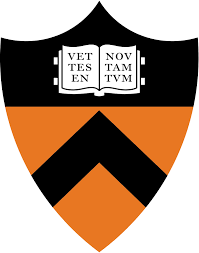

- Acceptance rate: 4%
- Average entry score: 1570 SAT or 35 ACT
- Student-to-faculty ratio: 5 to 1
- Estimated cost of attendance (tuition and fees): $78,490
- Average earning potential for graduates: $138,930 (Grad Reports)
Imagine diving into the world of computer programming at Princeton University, where trailblazing faculty, an innovative curriculum, and powerful industry ties await you.
As you master languages, algorithms, and design, you’ll also unearth breakthrough technologies. Princeton’s hands-on projects and research collaborations fuel your passion, while connections with top tech firms pave the way for a thriving career.
Source: Department of Computer Science
#2. Harvard University


- Acceptance rate: 4%
- Average entry score: 1460-1580 SAT or 33-35 ACT
- Student-to-faculty ratio: 7 to 1
- Estimated cost of attendance (tuition and fees): $76,963
- Average earning potential for graduates: $140,072 (College Factual)
Harvard University’s prestigious computer programming courses offer world-class education within its reputable Computer Science department. The curriculum features cutting-edge technology and research, ensuring program credibility and high graduate employability.
Students benefit from experienced faculty and strong industry connections, leading to exceptional job prospects in top tech companies and start-ups. A Harvard degree in computer programming opens doors to endless opportunities and career growth.
Source: Harvard University
#1. California Institute of Technology
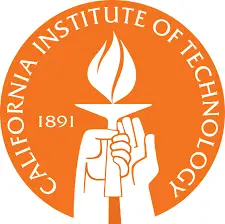

- Acceptance rate: 4%
- Average entry score: 1530-1560 SAT
- Student-to-faculty ratio: 3 to 1
- Estimated cost of attendance (tuition and fees): $83,598
- Average earning potential for graduates: $129,693 (College Factual)
Caltech’s cutting-edge computer programming courses empower students to master today’s technology landscape.
World-class faculty and innovative curricula hone your coding prowess while collaborative projects tackle real-world challenges. From AI to cybersecurity, Caltech offers diverse specializations in a tight-knit, supportive environment.
Prestigious alumni networks and unparalleled research opportunities propel you to success. Choose Caltech for an unrivaled, transformative education in the heart of the tech world.
Source: Caltech
Conclusion
Choosing the right programming school is a crucial step towards a successful tech career. The best computer science schools provide hands-on experience, prestigious faculty, and strong industry connections.
Assess your goals, resources, and desired location before making a decision. Remember, perseverance and passion are key. With the right mindset, any top programming school can be the launchpad for your thriving future.
Selection Criteria
Here is a list of the factors we considered when selecting the best computer programming colleges:
Please note that the order in this list might vary by ranking criteria and sources.
- Reputation and ranking of the school: We looked for schools that have a strong reputation and high ranking in programming.
- Faculty expertise, qualifications, and specialization: We researched the faculty members and their areas of expertise, and qualifications to ensure that the school has professors with relevant expertise and specialization in the areas of programming that are of interest.
- Curriculum and resources: We evaluated the curriculum to ensure it aligns with students’ interests and career goals and considered the quality of the school’s facilities and resources, such as labs, equipment, and libraries.
- Opportunities for hands-on learning and research: We looked for schools that provide opportunities for hands-on experience through internships, co-op programs, or fieldwork.
- Student support services and alumni network: We considered the availability of support services and the strength of the alumni network in providing mentorship, internships, and job opportunities after graduation.
- Extracurricular activities and diversity: We evaluated the availability of extracurricular activities and clubs that align with students’ interests and considered the school’s diversity and inclusivity.
- Networking and post-graduation support: We researched the school’s network of alumni and their post-graduation support for computer science students, and also considered if the schools have a strong network of programming professionals and researchers.
Frequently Asked Questions
Q1. What are the best programming schools in the US?
A school’s ranking doesn’t tell you everything about its quality, but it can be a good starting point.
We analyzed data from more than 100 schools to determine which ones are best for computer programming majors. Here are the top results:
- Harvard University
- Massachusetts Institute of Technology
- Stanford University
Q2. How much do the best programming schools cost?
The best schools for computer science majors aren’t cheap. In fact, the average tuition cost of a top-ranked school is $47,000 per year.
If you’re interested in pursuing a master’s degree after your computer programming bachelor’s degree, expect to pay even more. The average tuition for an online master of science in computer programming degree is approximately $44,500 per year.
Q3. Can you get a job after graduating with a computer science degree?
Yes, you can! And not just as computer programmers. There are many computer programming jobs available to students with a degree in computer science.
Here’s what some of the top companies are looking for:
- Mobile app developers
- Web developers
- Software engineers
- Database administrators
- Quality assurance (QA) testers
Q4. How do I get into a top computer programming school?
The best programming schools are competitive. You’ll need to get good grades in high school and take the right classes. You’ll also need to take the SAT or ACT and submit a great application.
Q5. What are the best programming languages to learn for beginners?
There are many programming languages. The most popular ones are C++, Java, Python and C#. If you’re just getting started with coding, try learning one of these languages first.
References
[1] Official Websites
[2] Salary Data from Glassdoor, College Factual, Grad Reports, College Simply, and Zippia, among others
[3] Ranking references including news media such as Best Programming Language Programs


